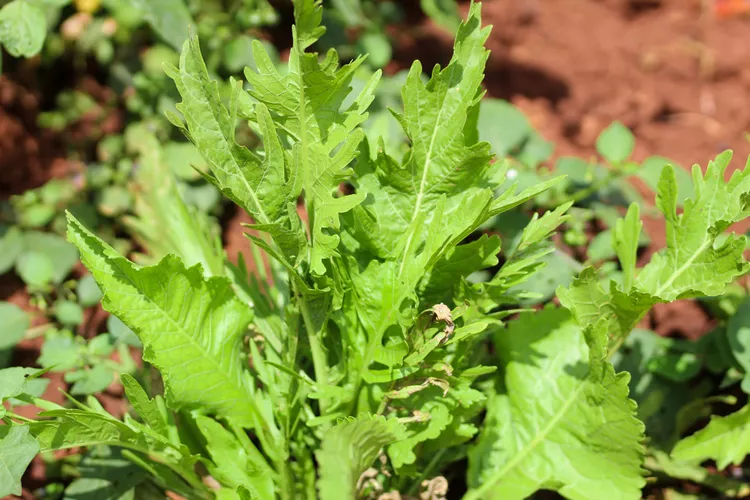
Description
Grown mostly for commercial salad mixes, mizuna is a mild-flavored Japanese mustard. Its green leaves are lobed, and its flavor is mildly bitter. Although they are closely related to turnips, mizuna has a distinct flavor. It is incredibly simple to cultivate and readily regenerates when taken as a cut-and-come-again green. The crispness of the leaves allows them to withstand light blanching or sautéing, and their fringed, serrated leaves lend decoration and flavor to salads. When used in cooking, the purple-leaved types are particularly attractive. The leaves are typically pickled by traditional Japanese cooks and used as a condiment.
Habitat
Although it is produced in more than 30 nations worldwide, 70% of it is produced in the United States, China, Japan, South Korea, and India.
Uses
Just one cup of mizuna provides 348 percent of your daily required intake of vitamin K. It is well known that vitamin K aids in blood coagulation processes. But this vitamin is also essential for bone metabolism. By promoting bone cell differentiation and elevating indicators of bone production, vitamin K facilitates the development of new bone cells.
Being a fat-soluble vitamin, vitamin A is a part of the protein rhodopsin, which is responsible for night vision. That’s why night blindness may result from a deficit. Eating foods high in vitamin A, like mizuna, can improve rhodopsin’s ability to keep the eye functioning normally.
Due to its distinct flavor and high nutritional content, mizuna is becoming a more and more popular ingredient worldwide. Because of its mild flavor and texture, mizuna is a perfect addition to noodle meals like soba or udon.

Varieties
Here are a few favorites among gardeners:
Komatsuma: This plant can withstand severe winters and droughts thanks to its thin leaves.
Kyona: A delicious green that is best consumed fresh, featuring frilly leaves on pencil-thin stalks.
Kyoto: This cultivar has a good bite and deeply serrated leaves.
While not as tasty as the other green varieties, red komatsuna is nevertheless highly flavorful.
Vitamin Green: This green, high in vitamins, has a velvety,
Plant Care
- Light
The ideal growing conditions for mizuna are bright areas with three to four hours of direct sunlight each day. But since this plant likes cool temperatures, there will be an abundance of crops in the spring and autumn. Although it bolts slowly, hot weather and long, sunny days could accelerate the process.
- Soil
Rich organic matter added to well-drained soil is preferred by mizuna plants. Being a leafy crop, mizuna also grows well on soil that is high in nitrogen. While this green may thrive on soil with a pH of 6.0 to 7.5, 6.5 to 7.0 is ideal.
- Water
For optimum growing outcomes, keep the soil in your garden equally moist. Mizuna roots might rot if the soil is excessively damp. Plants may not flourish if the weather is excessively dry.
- Temperature and Humidity
Mizuna, like other greens, prefers the chilly spring and autumn temperatures. The green will eventually bolt in hot weather.
- Fertilizer
Greens meant for human consumption should never be fertilized using chemical agents. Soils that have been intensively composted with organic materials should provide enough nutrients for mizuna. Try misting the plants with a diluted fish emulsion solution in the middle of the growing season if you feel like it might help. Just make sure you wash the leaves well before consuming them.
Table





